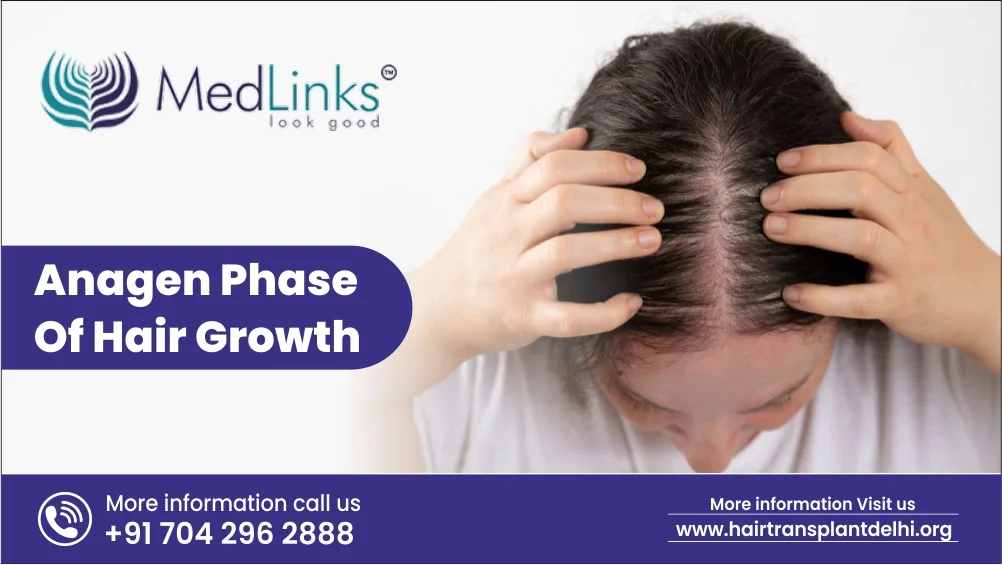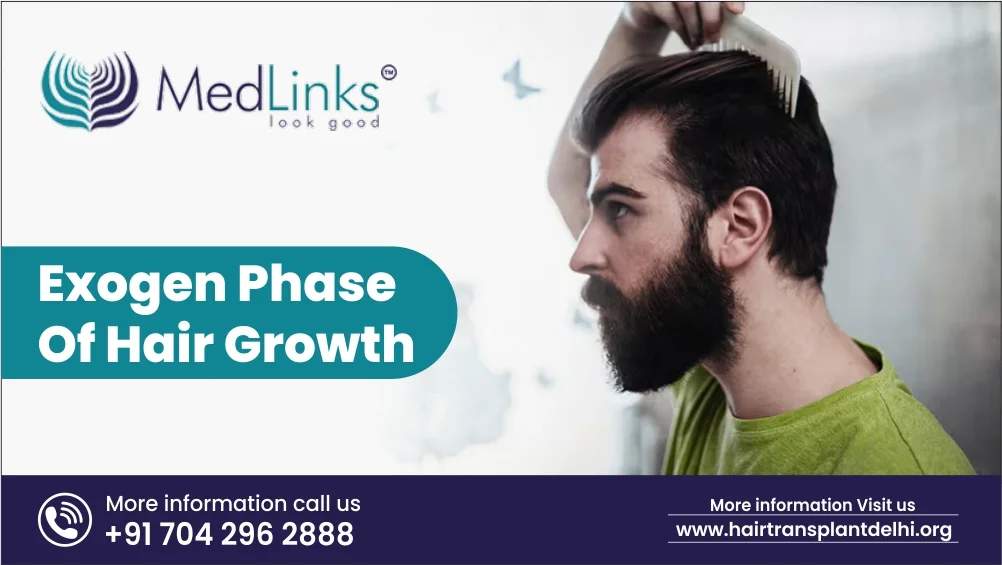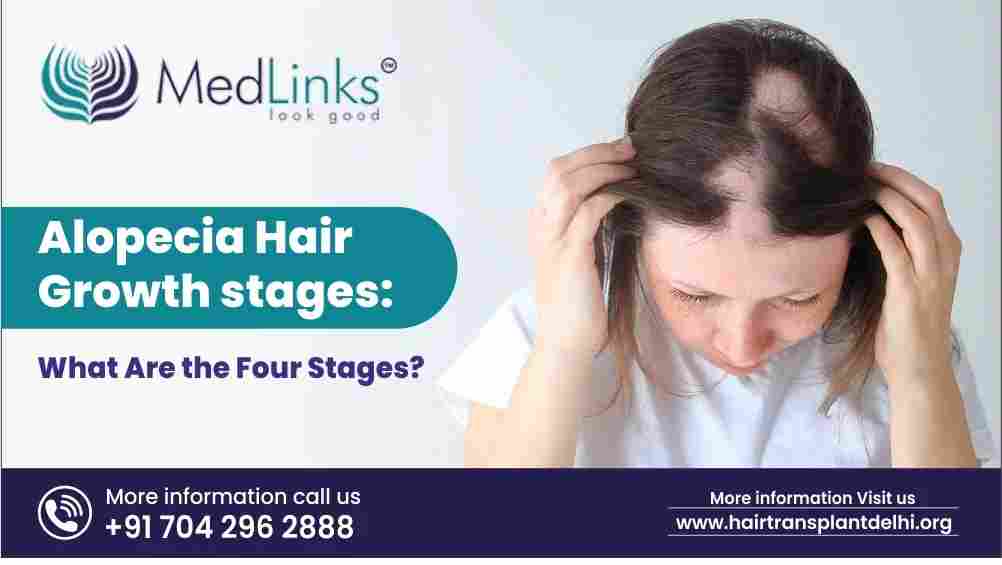The anagen phase is the most important part of the hair growth cycle, often referred to as the growth phase. If you’re curious about how your hair grows or why some people can grow their hair longer than others, the Anagen Phase of Hair Growth holds the answers. This phase not only determines the length and health of your hair but also provides crucial insights into managing hair loss and promoting regrowth.
In this blog, we’ll take an in-depth look at the anagen phase, its role in hair growth, factors that influence it, and how understanding this phase can help you maintain healthy hair.
What is the Anagen Phase?
The anagen phase is the first stage of the hair growth cycle, characterized by active hair growth. During this phase, hair follicles are working at their peak capacity, producing new hair cells that contribute to the growth of hair strands. The hair shaft is formed and continuously pushed upward, resulting in the visible growth of hair.
This phase is crucial because it determines the length of time hair can grow before it enters the next stage of the hair cycle. On the scalp, the anagen phase can last anywhere between 2 to 7 years, which is why hair can grow several inches long. However, on other parts of the body, such as the eyebrows or arms, the anagen phase is much shorter, which explains why hair in those areas remains shorter.
How Hair Grows in the Anagen Phase
Hair grows from hair follicles, small pockets in the scalp or skin that contain hair roots. During the anagen phase, hair follicles are in their most productive state. Hair cells in the root bulb divide rapidly, creating keratin (the protein that makes up hair). As new cells form, they push older cells upward, causing the visible hair shaft to emerge through the skin.
On average, hair grows about half an inch per month during the anagen phase. However, this can vary based on factors like genetics, overall health, and environmental influences. Some people have a naturally longer anagen phase, allowing them to grow long hair, while others may experience a shorter growth period.
Duration of the Anagen Phase
The length of the anagen phase varies from person to person and can be influenced by several factors. On average, the phase lasts between 2 to 7 years for scalp hair. This wide range explains why some individuals can grow their hair significantly longer than others.
Factors Influencing the Duration of the Anagen Phase:
- Genetics: Your genetic makeup plays a significant role in determining how long your hair stays in the anagen phase. If your family members have long, healthy hair, you’re likely to inherit a similar growth pattern.
- Age: As we age, the length of the anagen phase naturally shortens. This is why older individuals often experience slower hair growth and thinning hair.
- Hormones: Hormonal changes, particularly due to pregnancy, menopause, or thyroid conditions, can influence the length of the anagen phase. For example, during pregnancy, many women notice accelerated hair growth due to increased hormone levels.
- Nutrition: A healthy, nutrient-rich diet supports hair growth by providing the follicles with the vitamins and minerals needed for cell production. Deficiencies in essential nutrients like biotin, zinc, or iron can shorten the anagen phase.
- Health Conditions: Certain medical conditions, such as alopecia or scalp infections, can disrupt the hair growth cycle, causing the anagen phase to be prematurely shortened.
- Stress: High levels of stress can have a negative impact on hair growth, sometimes pushing hair follicles into the resting (telogen) phase prematurely, causing shedding and thinning hair.
Why is the Anagen Phase Important?
The anagen phase is vital because it determines how long and how healthy your hair will grow. If hair stays in the anagen phase for a longer period, you can enjoy thicker and longer hair. Conversely, if the phase is cut short, hair may appear thinner and have trouble growing past a certain length.
In some hair loss conditions, such as androgenetic alopecia (pattern baldness), the anagen phase is significantly shortened, meaning hair follicles spend less time actively growing. This results in shorter, thinner hair and increased hair shedding. Understanding the anagen phase can help in selecting treatments and lifestyle changes to support and lengthen this growth stage.
How to Promote a Healthy Anagen Phase
Maintaining and promoting a healthy anagen phase is key to achieving strong, long hair. Here are some strategies that can help extend this phase and enhance hair growth:
1. Maintain a Balanced Diet
A well-balanced diet rich in essential vitamins and minerals can significantly impact hair growth. Nutrients such as biotin, vitamin E, zinc, omega-3 fatty acids, and protein are vital for healthy hair follicles. Foods like eggs, nuts, seeds, leafy greens, and fish should be included in your diet to promote an active and healthy anagen phase.
2. Use Hair Growth Supplements
If you struggle to get all the necessary nutrients from your diet, consider using hair growth supplements. Supplements like biotin and collagen are known to support hair growth and may help extend the anagen phase, particularly for those with nutrient deficiencies.
3. Minimize Stress
Chronic stress can lead to a condition called telogen effluvium, which prematurely pushes hair follicles out of the anagen phase and into the resting (telogen) phase. Practicing stress-relieving techniques such as meditation, yoga, and regular exercise can help keep hair in the active growth phase for a longer time.
4. Use Hair Care Products with Growth-Stimulating Ingredients
Topical treatments, such as shampoos, conditioners, and serums that contain ingredients like minoxidil, peppermint oil, or caffeine, have been shown to stimulate hair follicles and encourage a longer anagen phase. These ingredients help nourish the scalp and improve blood circulation, supporting healthy follicle function.
5. Consider Platelet-Rich Plasma (PRP) Therapy
PRP therapy is a modern treatment that involves injecting the patient’s own plasma into the scalp to stimulate hair follicles. It has been shown to improve the length and strength of the anagen phase in people experiencing hair loss, making it a promising option for individuals dealing with pattern baldness or other forms of alopecia.
6. Avoid Overstyling and Heat Damage
Excessive heat styling, chemical treatments, and tight hairstyles can damage hair follicles and shorten the anagen phase. To protect your hair, minimize the use of hot tools and chemical treatments, and choose gentle hairstyles that don’t put unnecessary tension on your scalp.
Anagen Phase and Hair Loss Treatment
Many hair loss treatments, such as minoxidil (Rogaine) or finasteride, work by stimulating hair follicles to stay in the anagen phase longer. These treatments can be particularly effective for individuals suffering from conditions like androgenetic alopecia or alopecia areata, as they help to reactivate dormant hair follicles and promote regrowth.
In some cases, hair transplant procedures are recommended for individuals whose hair follicles have become permanently inactive. By moving healthy follicles from areas with longer anagen phases to balding spots, hair transplants can effectively restore hair growth.
Conclusion
The anagen phase is the most crucial stage of the hair growth cycle, determining both the length and quality of your hair. By understanding this phase and taking steps to nourish and protect your hair follicles, you can promote longer, healthier hair growth. Whether you’re looking to manage hair loss or simply improve the health of your hair, focusing on the anagen phase is key to achieving your goals.






